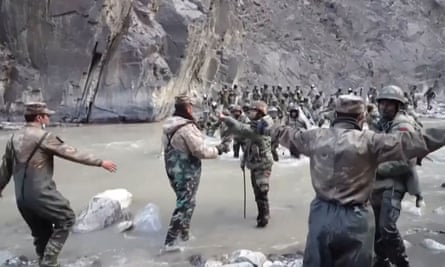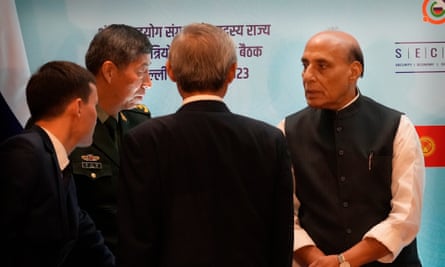[ad_1]
Washington: US intelligence officials predicted that a Chinese invasion of Taiwan or an attack as early as 2025 on the island nation could cost the world economy USD 1 trillion, reported Taipei Times.
US Director of National Intelligence Avril Haines presented what she called a “general estimate” during testimony before the US Senate Armed Services Committee on Thursday.
“A Chinese invasion of Taiwan could halt production by the world’s largest advanced chipmaker, wiping out up to USD 1 trillion per year from the global economy in the first few years,” said the top US intelligence official.

The advanced semiconductors produced by Taiwan Semiconductor Manufacturing Co (TSMC) are used in 90 per cent of “almost every category of electronic device around the world,” said Haines.
Haines said that Chinese President Xi Jinping is leaning toward unifying with Taiwan in a “peaceful” manner, but is also preparing possible military action to achieve that goal, reported Taipei Times.
“I think we continue to assess that he [Xi] would prefer to achieve unification of Taiwan through peaceful means,” she said.
If a Chinese invasion stopped TSMC from producing those chips, “it will have an enormous global financial impact that I think runs somewhere between USD 600 billion to USD 1 trillion on an annual basis for the first few years,” she said.
“It will also have an impact on [US] GDP if there was such an invasion of Taiwan and that [TSMC’s production] was blocked,” Haines said.
However, Haines said it would also have a large impact on China’s economy, reported Taipei Times.
To deal with that risk, TSMC is investing USD 40 million to build two sophisticated wafer fabs in Arizona at Washington’s urging.
A fab using the 4-nanometer process is scheduled to begin mass production next year, and the other, using the more advanced 3-nanometer process, is slated to mass-produce chips starting in 2026, reported Taipei Times.
Haines’ comments came after US Senator Rick Scott raised concerns about the possibility of China invading Taiwan, citing Xi’s remarks in the past year suggesting that he was preparing the Chinese population for a war against Taiwan.
Xi has directed the Chinese military to “provide him with a military option, essentially, to be able to take it without concern of [US] intervention,” which is expected to “have a meaningful impact on his capacity to do so,” Haines said.
Also at the hearing, US Defense Intelligence Agency Director Scott Berrier appeared to have greater concern than Haines about a possible invasion of Taiwan, saying that Xi’s rhetoric has been “picking up” after he assumed his third term as president, reported Taipei Times.
Berrier provided a list of possible invasion dates ranging from 2025 to 2049. “I think the bottom line is he’s told his military to be ready,” Berrier said.
Haines said the relationship between the US and China has become “more challenging,” citing a speech made by Xi in March in which he blamed Washington for suppressing Beijing, reflecting his distrust of the US and his belief that Washington is seeking to contain his country, reported Taipei Times.
[ad_2]
#Chinese #invasion #Taiwan #cost #world #economy #USD #trillion #intelligence
( With inputs from www.siasat.com )














